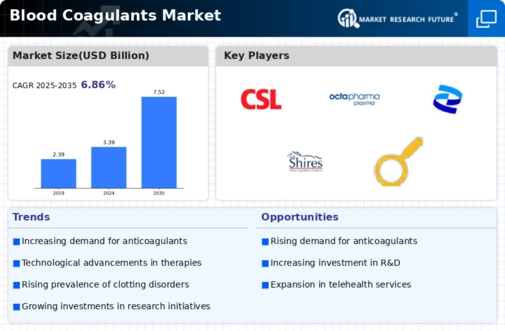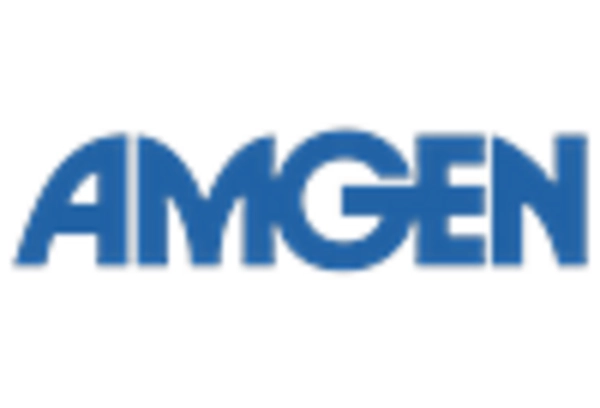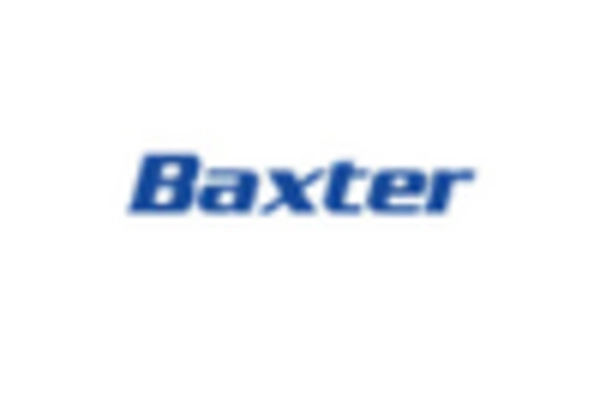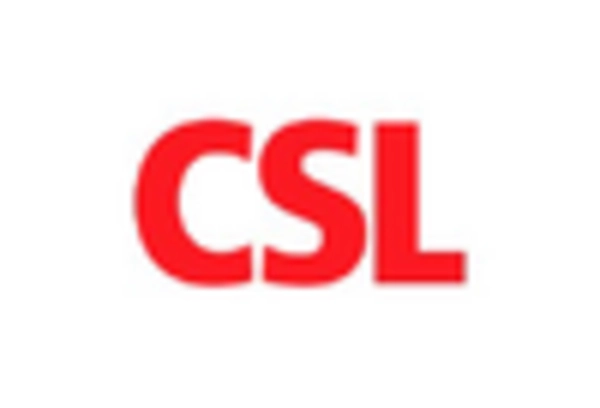-
Definition
-
Scope of the Study
- Research
- Assumptions
- Limitations
-
Overview
-
Primary Research
-
Secondary
-
Market Size Estimation
-
Drivers
-
Restraints
-
Opportunities
-
Challenges
-
Porter’s Five Forces
- Bargaining Power of Suppliers
- Bargaining Power of
- Threat of New Entrants
- Threat of Substitutes
-
Value Chain Analysis
-
Blood Coagulants Market, by Type
-
Overview
-
Coagulation Factor
- Recombinant Coagulation Factor
-
Market Estimates & Forecast, by
-
Region, 2022–2030
-
Market Estimates & Forecast, by Country, 2022–2030
-
Market Estimates & Forecast,
-
by Region, 2022–2030
-
Plasma-Derived Coagulation Factor
-
Market Estimates & Forecast, by Country, 2022–2030
-
Others
-
Market Estimates & Forecast, by Region, 2022–2030
-
Market Estimates & Forecast, by Country, 2022–2030
-
Chapter
-
Global Blood Coagulants Market, by Indication
-
Overview
-
Hemophilia
-
Market Estimates & Forecast, by Region, 2022–2030
-
Market
-
Estimates & Forecast, by Country, 2022–2030
-
Surgery
-
Market
-
Estimates & Forecast, by Region, 2022–2030
-
Market Estimates &
-
Forecast, by Country, 2022–2030
-
Other Bleeding Disorders
-
Market
-
Estimates & Forecast, by Region, 2022–2030
-
Market Estimates &
-
Forecast, by Country, 2022–2030
-
Chapter 8. Global Blood Coagulants
-
Market, by Region
-
Overview
-
Americas
- North America
- Latin America
-
Europe
-
Western Europe
-
Spain
-
Australia
-
East & Africa
-
Chapter 9.
-
Company Landscape
-
Chapter 10. Company Profiles
-
Company Overview
-
Company Overview
-
Company Overview
-
Overview
-
Overview
-
Overview
-
Developments
-
Chapter 11 MRFR Conclusion
-
of the Market
-
Chapter
-
Germany
-
France
-
Italy
-
UK
-
Rest of Western Europe
-
Eastern Europe
-
Asia-Pacific
- Japan
- China
- India
- South Korea
- Rest of Asia-Pacific
-
Middle
- Middle East
- Africa
-
Overview
-
Market Share Analysis
-
Aptevo Biotherapeutics LLC
- Product Overview
- Financials Overview
- Key Developments
- SWOT Analysis
-
Baxalta US Inc.
- Company Overview
- Product Overview
- Financial Overview
- Key Developments
- SWOT Analysis
-
Baxter Laboratories
- Company Overview
- Product Overview
- Financial Overview
- Key Development
- SWOT Analysis
-
Bayer AG
- Product Overview
- Financial Overview
- Key Development
- SWOT Analysis
-
CSL Behring
- Product Overview
- Financial overview
- Key Developments
- SWOT Analysis
-
GRIFOLS USA, LLC
- Company Overview
- Product Overview
- Financial Overview
- Key Developments
- SWOT Analysis
-
Novo Nordisk A/S
- Overview
- Product Overview
- Financial Overview
- Key Developments
- SWOT Analysis
-
Octapharma
- Product Overview
- Financials
- Key Developments
- SWOT Analysis
-
Pfizer
- Overview
- Product
- Financials
- Key Developments
- SWOT Analysis
-
Shire
- Overview
- Product Overview
- Financials
- Key Developments
- SWOT Analysis
-
SOBI
- Product Overview
- Financials
- Key
- SWOT Analysis
-
Others
-
Key Findings
- From CEO’s Viewpoint
- Unmet Needs
-
Predictions for the Blood Coagulants Industry
-
Appendix
-
LIST OF TABLES
-
Global Blood Coagulants
-
Market Synopsis, 2022–2030
-
Global Blood Coagulants Market Estimates
-
and Forecast, 2022–2030 (USD Million)
-
Global Blood Coagulants
-
Market, by Type, 2022–2030 (USD Million)
-
Global Blood Coagulants
-
Market, by Indication, 2022–2030 (USD Million)
-
Global Blood Coagulants
-
Market, by Region, 2022–2030 (USD Million)
-
North America: Blood
-
Coagulants Market, by Type, 2022–2030 (USD Million)
-
North America:
-
Blood Coagulants Market, by Indication, 2022–2030 (USD Million)
-
Table
-
North America: Blood Coagulants Market, by Region, 2022–2030 (USD Million)
-
US: Blood Coagulants Market, by Type, 2022–2030 (USD Million)
-
US: Blood Coagulants Market, by Indication, 2022–2030 (USD Million)
-
US: Blood Coagulants Market, by Region, 2022–2030 (USD Million)
-
Canada: Blood Coagulants Market, by Type, 2022–2030 (USD Million)
-
Canada: Blood Coagulants Market, by Indication, 2022–2030 (USD
-
Million)
-
Canada: Blood Coagulants Market, by Region, 2022–2030
-
(USD Million)
-
South America: Blood Coagulants Market, by Type, 2022–2030
-
(USD Million)
-
South America: Blood Coagulants Market, by Indication,
-
South America: Blood Coagulants Market,
-
by Region, 2022–2030 (USD Million)
-
Europe: Blood Coagulants
-
Market, by Type, 2022–2030 (USD Million)
-
Europe: Blood Coagulants
-
Market, by Indication, 2022–2030 (USD Million)
-
Europe: Blood
-
Coagulants Market, by Region, 2022–2030 (USD Million)
-
Western
-
Europe: Blood Coagulants Market, by Type, 2022–2030 (USD Million)
-
Table
-
Western Europe: Blood Coagulants Market, by Indication, 2022–2030 (USD
-
Million)
-
Western Europe: Blood Coagulants Market, by Region, 2022–2030
-
(USD Million)
-
Eastern Europe: Blood Coagulants Market, by Type, 2022–2030
-
(USD Million)
-
Eastern Europe: Blood Coagulants Market, by Indication,
-
Eastern Europe: Blood Coagulants Market,
-
by Region, 2022–2030 (USD Million)
-
Asia-Pacific: Blood Coagulants
-
Market, by Type, 2022–2030 (USD Million)
-
Asia-Pacific: Blood
-
Coagulants Market, by Indication, 2022–2030 (USD Million)
-
Asia-Pacific:
-
Blood Coagulants Market, by Region, 2022–2030 (USD Million)
-
Table 30
-
Middle East & Africa: Blood Coagulants Market, by Type, 2022–2030 (USD
-
Million)
-
Middle East & Africa: Blood Coagulants Market, by Indication,
-
Middle East & Africa: Blood Coagulants
-
Market, by Region, 2022–2030 (USD Million)
-
LIST OF FIGURES
-
Figure
-
Research Process
-
Segmentation for Global Blood Coagulants Market
-
Segmentation Market Dynamics for Global Blood Coagulants Market
-
Figure
-
Global Blood Coagulants Market Share, by Type, 2022 (%)
-
Global Blood
-
Coagulants Market Share, by Indication, 2022 (%)
-
Global Blood Coagulants
-
Market Share, by Region, 2022 (%)
-
North America: Blood Coagulants
-
Market Share, by Country, 2022 (%)
-
Europe: Blood Coagulants Market
-
Share, by Country, 2022 (%)
-
Asia-Pacific: Blood Coagulants Market
-
Share, by Country, 2022 (%)
-
Middle East & Africa: Blood Coagulants
-
Market Share, by Country, 2022 (%)
-
Global Blood Coagulants Market:
-
Company Share Analysis, 2022 (%)
-
Aptevo Biotherapeutics LLC: Key
-
Financials
-
Aptevo Biotherapeutics LLC: Segmental Revenue
-
Figure
-
Aptevo Biotherapeutics LLC: Geographical Revenue
-
Baxalta US Inc.:
-
Key Financials
-
Baxalta US Inc.: Segmental Revenue
-
Figure 17
-
Baxalta US Inc.: Geographical Revenue
-
Baxter Laboratories: Key Financials
-
Baxter Laboratories: Segmental Revenue
-
Baxter Laboratories:
-
Geographical Revenue
-
Bayer AG: Key Financials
-
Bayer
-
AG: Segmental Revenue
-
Bayer AG: Geographical Revenue
-
Figure
-
CSL Behring: Key Financials
-
CSL Behring: Segmental Revenue
-
CSL Behring: Geographical Revenue
-
GRIFOLS USA, LLC: Key
-
Financials
-
GRIFOLS USA, LLC: Segmental Revenue
-
GRIFOLS
-
USA, LLC: Geographical Revenue
-
Novo Nordisk A/S: Key Financials
-
Novo Nordisk A/S: Segmental Revenue
-
Novo Nordisk A/S:
-
Geographical Revenue
-
Octapharma: Key Financials
-
Octapharma:
-
Segmental Revenue
-
Octapharma: Geographical Revenue
-
Figure 36
-
Pfizer: Key Financials
-
Pfizer: Segmental Revenue
-
Pfizer:
-
Geographical Revenue
-
Shire: Key Financials
-
Shire:
-
Segmental Revenue
-
Shire: Geographical Revenue
-
SOBI:
-
Key Financials
-
SOBI: Segmental Revenue
-
SOBI: Geographical
-
Revenue

















Leave a Comment